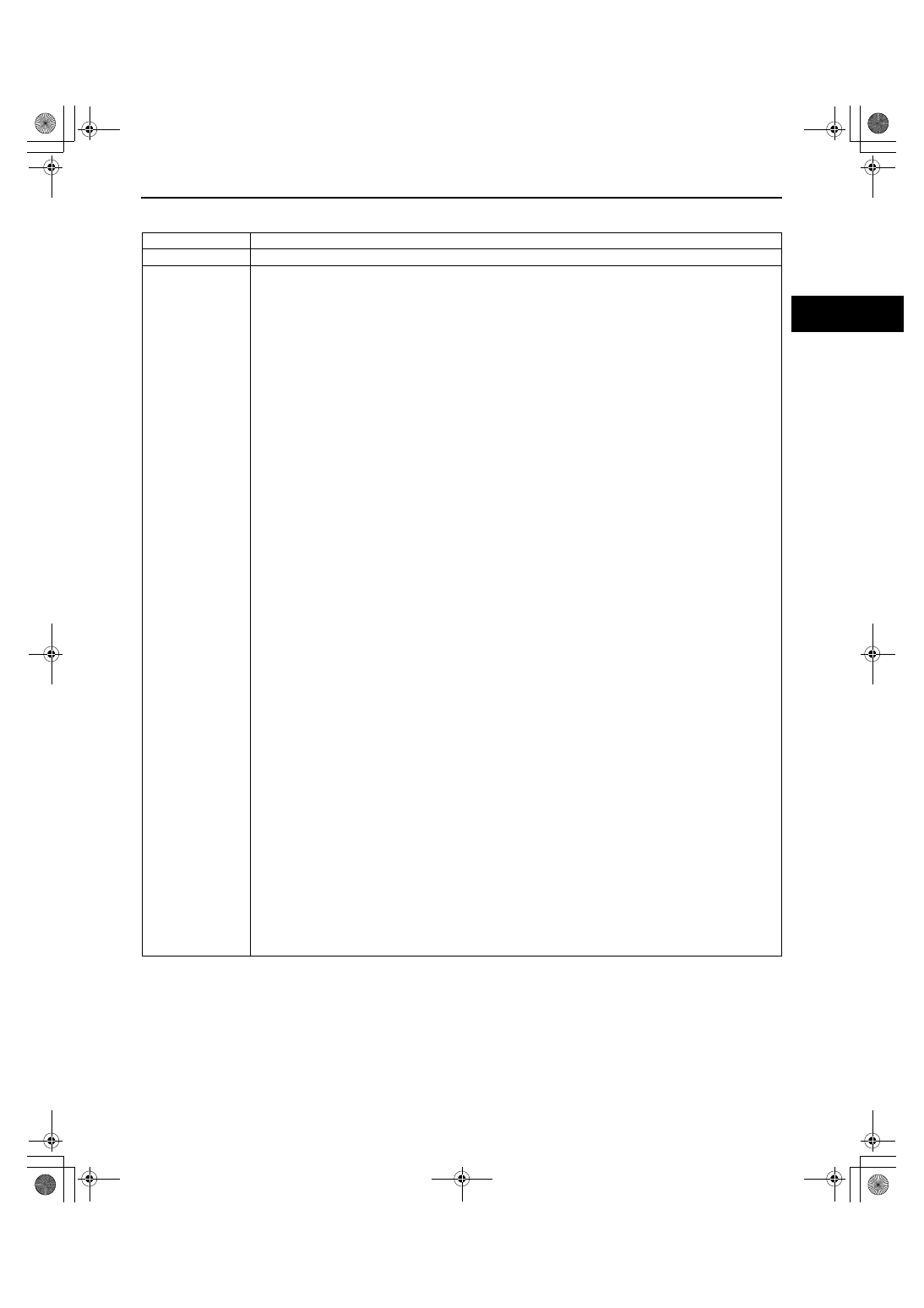Mazda CX 7. Manual - part 89

SYMPTOM TROUBLESHOOTING [L3 WITH TC]
01-03–53
01-03
NO.14 POOR FUEL ECONOMY[L3 WITH TC]
id010339802000
14
POOR FUEL ECONOMY
DESCRIPTION
Fuel economy is unsatisfactory.
POSSIBLE CAUSE
• Contaminated air cleaner element
• Engine cooling system malfunction
• Improper ATF level
• Weak spark
• Spark plug malfunction
• Poor fuel quality
• Erratic signal from CKP sensor
• Erratic or no signal from CMP sensor
• Fuel pressure sensor or related circuit malfunction
• ECT sensor or related circuit malfunction
• Manifold absolute pressure (MAP) sensor or related circuit malfunction
• Accelerator position sensor or related circuit malfunction
• MAF sensor or related circuit malfunction
• Contaminated MAF sensor
• IAT sensor No.1 or related circuit malfunction
• IAT sensor No.2 or related circuit malfunction
• VSS or related circuit malfunction
• Variable swirl system malfunction
• Improper coolant level
• Inadequate fuel pressure (high-pressure side)
• Injection timing is incorrect
• Fuel injector or related circuit malfunction
• High pressure fuel pump malfunction
• Fuel leakage
• Fuel line restriction
• Fuel filter clogging
• PCV valve malfunction
• Brake dragging
• A/C system improper operation
• Improper valve timing due to jumping out of timing chain
• Improper engine compression
• Turbocharger malfunction
• Charge air cooler malfunction
• Exhaust system and/or three-way catalytic converter clogging
• EGR system malfunction
• Vacuum leakage
Warning
The following troubleshooting flow chart contains the fuel system diagnosis and repair
procedures. Read the following warnings before performing the fuel system services:
• Fuel vapor is hazardous. It can easily ignite, causing serious injury and damage. Always
keep sparks and flames away from fuel.
• Fuel line spills and leakage are dangerous. Fuel can ignite and cause serious injury or
death and damage. Fuel can also irritate skin and eyes. To prevent this, always complete
“BEFORE REPAIR ROCEDURE” and “AFTER REPAIR PROCEDURE” described in this
manual.
(See01-14-4 BEFORE REPAIR PROCEDURE[L3 WITH TC].)
(See01-14-4 AFTER REPAIR PROCEDURE[L3 WITH TC].)
Caution
• Disconnecting/connecting the quick release connector without cleaning it may possibly
cause damage to the fuel pipe and quick release connector. Always clean the quick release
connector joint area before disconnecting/connecting, and make sure that it is free of
foreign material.
1871-1U-06B(01-03).fm 53 ページ 2006年3月15日 水曜日 午前10時36分